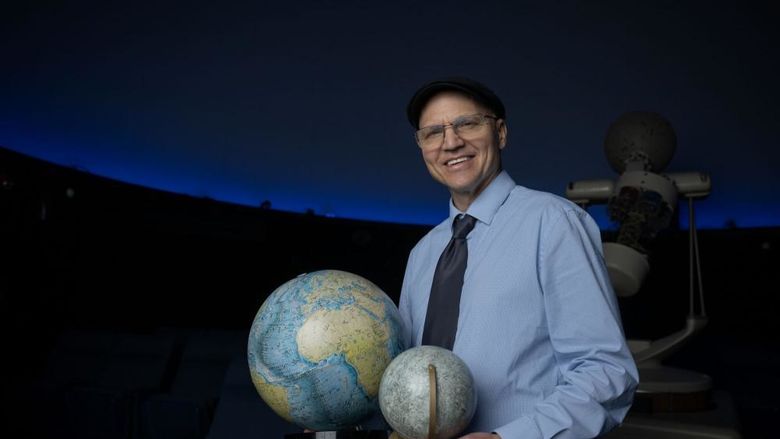
Jim Gavio, director of the Yahn Planetarium at Penn State Behrend, used Braille star maps and AM-radio frequencies to engage low-vision visitors in the April 8 total solar eclipse.
Nearly 50 clients of the Sight Center of Northwest PA visited the Yahn Planetarium at Penn State Behrend to learn about the April 8 total solar eclipse. They used Braille star maps to track the path of the moon in a tactile way.
“With Braille star maps, they can feel the constellations,” said Jim Gavio, director of the Yahn Planetarium. He offered a variety of eclipse-themed programming in advance of the eclipse, which passed over Erie in the path of totality.
“We also talked about ‘hearing’ the eclipse,” Gavio said. “You’re able to hear the effect of the eclipse on AM radio as the shadow of the moon moves closer to your location, and then moves away.”
The Sight Center offers a low-vision clinic and specialized sensory services to adults and youth with limited vision. The planetarium visit was an effort to engage clients in the total eclipse – a phenomenon that will not occur again in Erie until 2144.
Robb Frederick
Director of Strategic Communications, Penn State Behrend





